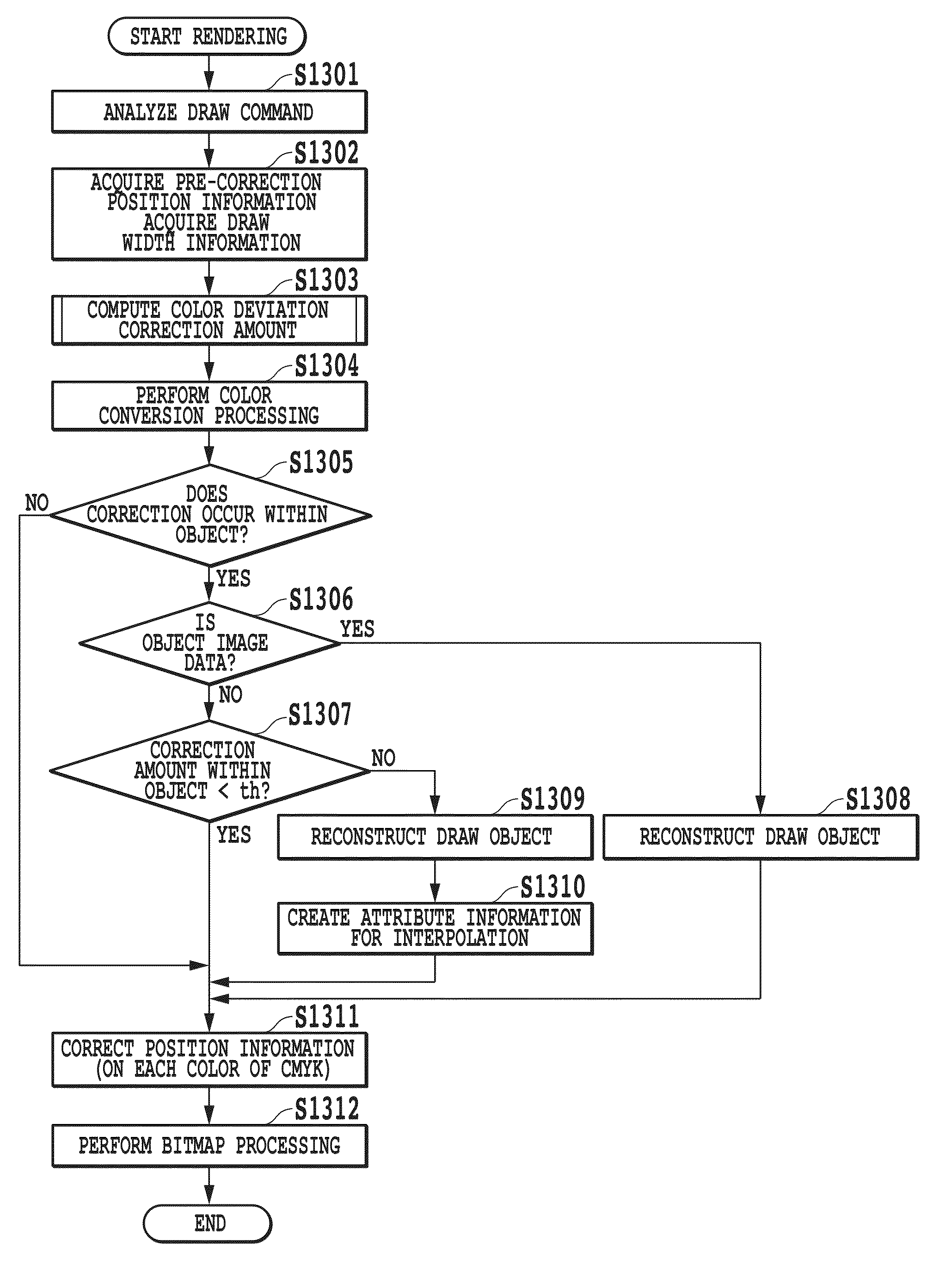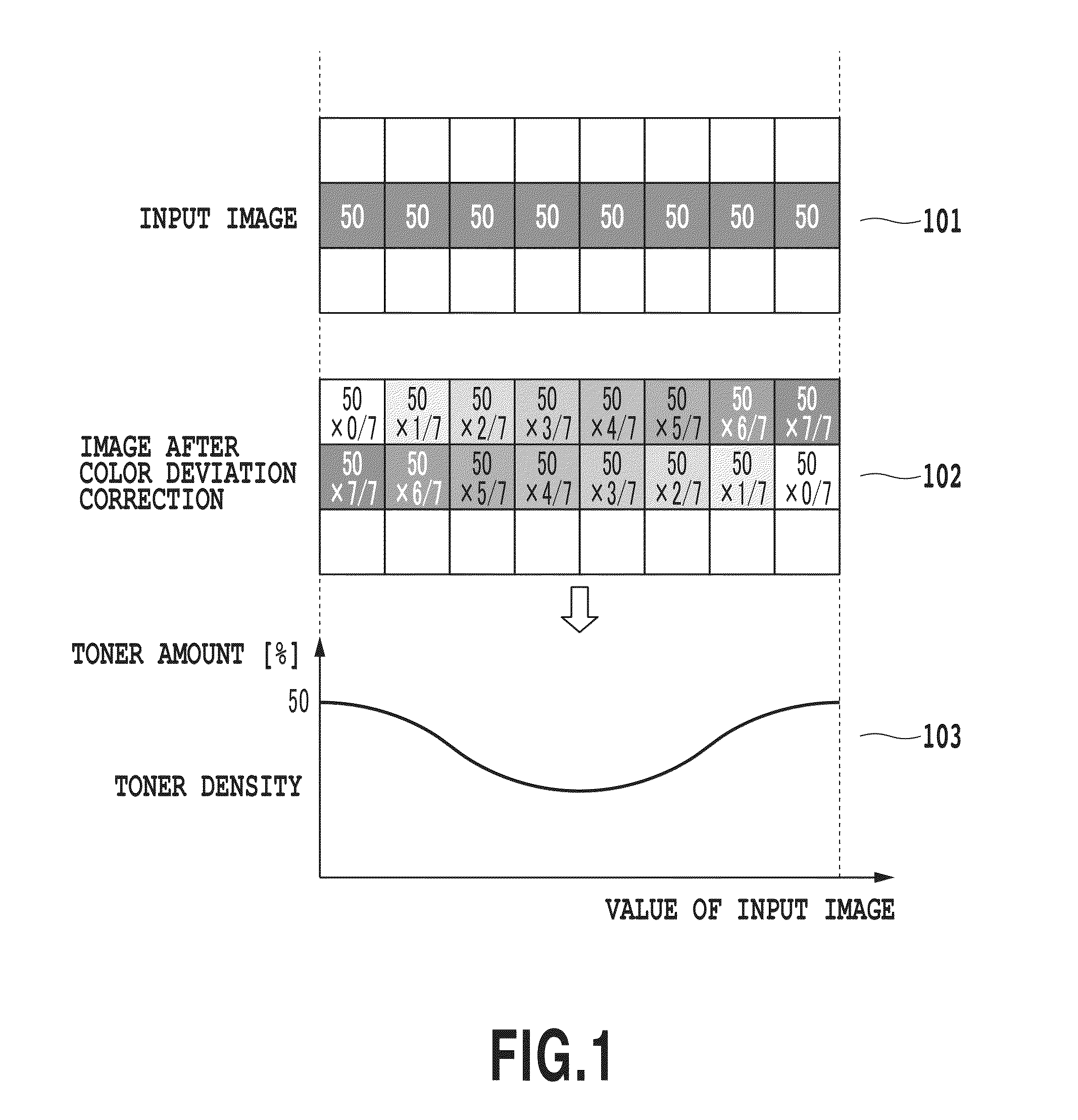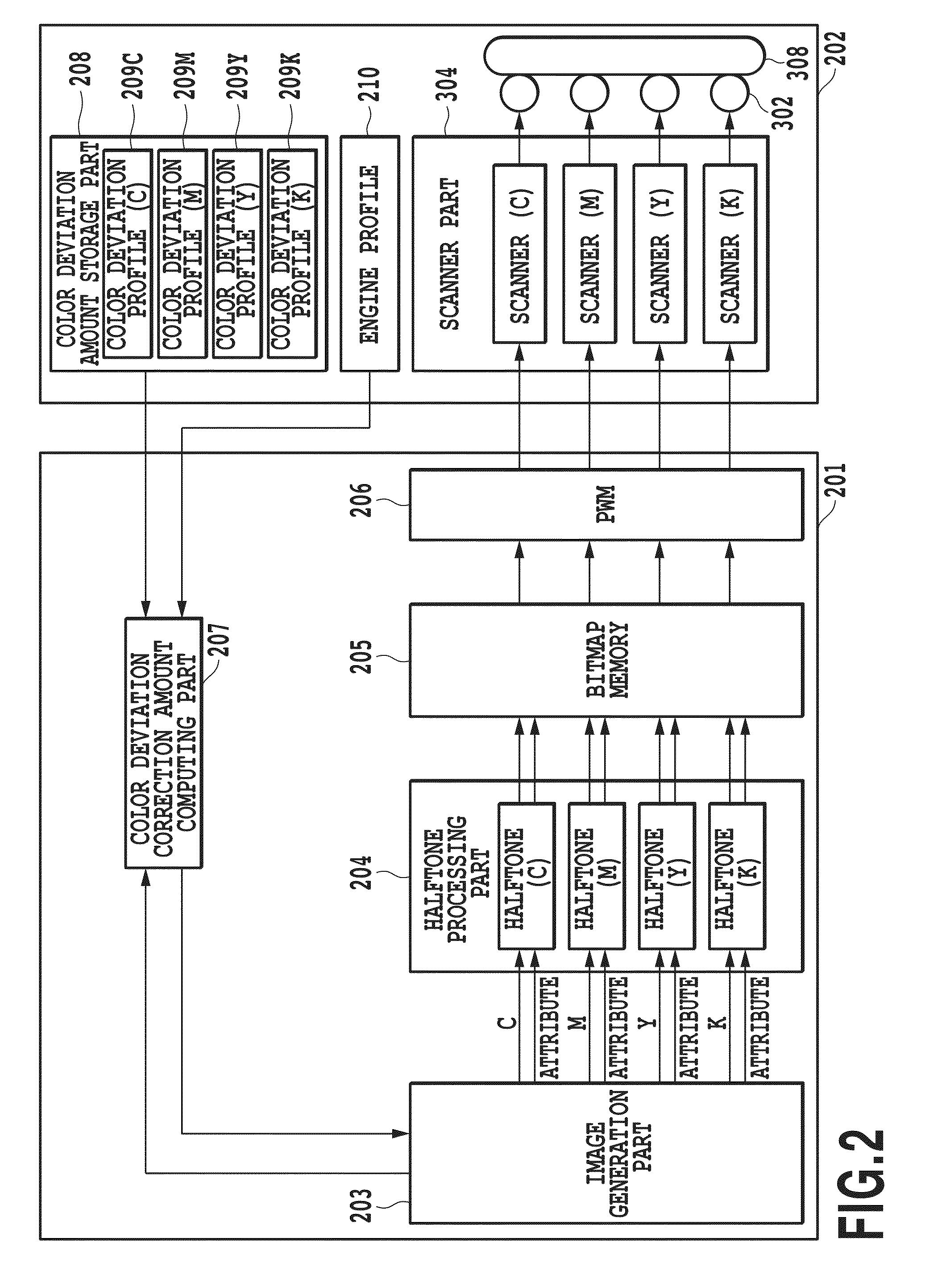Image formation apparatus and image formation method for performing color deviation correction
a color deviation correction and image technology, applied in the field of image processing techniques, can solve the problems of poor attachment position accuracy of the deflection scanner itself, increase in costs, and difficulty in obtaining high-quality color images, and achieve the effect of not having uneven density
- Summary
- Abstract
- Description
- Claims
- Application Information
AI Technical Summary
Benefits of technology
Problems solved by technology
Method used
Image
Examples
embodiment 1
[0037]An embodiment of the present invention is described based on the drawings.
[0038]FIG. 2 is a block diagram illustrating the configuration of an image formation apparatus according to Embodiment 1 of the present invention, the configuration being related to electrostatic latent image formation. The image formation apparatus includes an image processing unit 201 and an image forming unit 202. To give an overall process, the image processing unit 201 generates bitmap image data and performs halftone processing on the bitmap image data, and the image forming unit 202 forms an image on a recording medium based on the data from the image processing unit 201. Constituents in FIG. 2 will be described later.
[0039]FIG. 3 is a cross-sectional view of a tandem color image formation apparatus using an intermediate transfer body 308, as an example of an electrophotographic color image formation apparatus. Using FIG. 3, a description is given of operation of the image forming unit 202 of the ...
embodiment 2
[0093]In the first embodiment of the present invention described above, generation of a step in image data to be drawn is avoided by performing color deviation correction on a draw object basis and performing an offset on a draw object basis. However, when the color deviation correction is performed on a draw object basis, a color deviation may possibly occur within the same object, depending on how much the scan line inclines or curves. Particularly, when the draw object is large in the main scanning direction, such a phenomenon is very likely to occur.
[0094]A second embodiment of the present invention takes this problem into consideration, and determines, based on the width of a draw object, whether one-pixel-basis color deviation correction, namely an offset, occurs within the draw object. Further, when an offset occurs, whether to perform an offset within the draw object is determined based on the characteristics of the draw object and the difference in the correction amount wit...
embodiment 3
[0119]In the first and second embodiments of the present invention described above, the image formation apparatus performs processing for color deviation correction. On the other hand, recent systems often perform print processing in the following manner. Specifically, a computer device (an image processing apparatus) or the like communicatively connected to an image formation apparatus performs the rendering processing and the halftone processing, and sends the image formation apparatus the print data obtained by the halftone processing. In a third embodiment of the present invention, a case where color deviation correction processing is performed by image formation processing on a host computer is described.
[0120]Such color deviation correction processing can be performed by the image formation processing on the host computer when the host computer performs the same processing as the processing performed by the image processing units 201 and 1101 described in detail in the first a...
PUM
 Login to View More
Login to View More Abstract
Description
Claims
Application Information
 Login to View More
Login to View More - R&D
- Intellectual Property
- Life Sciences
- Materials
- Tech Scout
- Unparalleled Data Quality
- Higher Quality Content
- 60% Fewer Hallucinations
Browse by: Latest US Patents, China's latest patents, Technical Efficacy Thesaurus, Application Domain, Technology Topic, Popular Technical Reports.
© 2025 PatSnap. All rights reserved.Legal|Privacy policy|Modern Slavery Act Transparency Statement|Sitemap|About US| Contact US: help@patsnap.com



